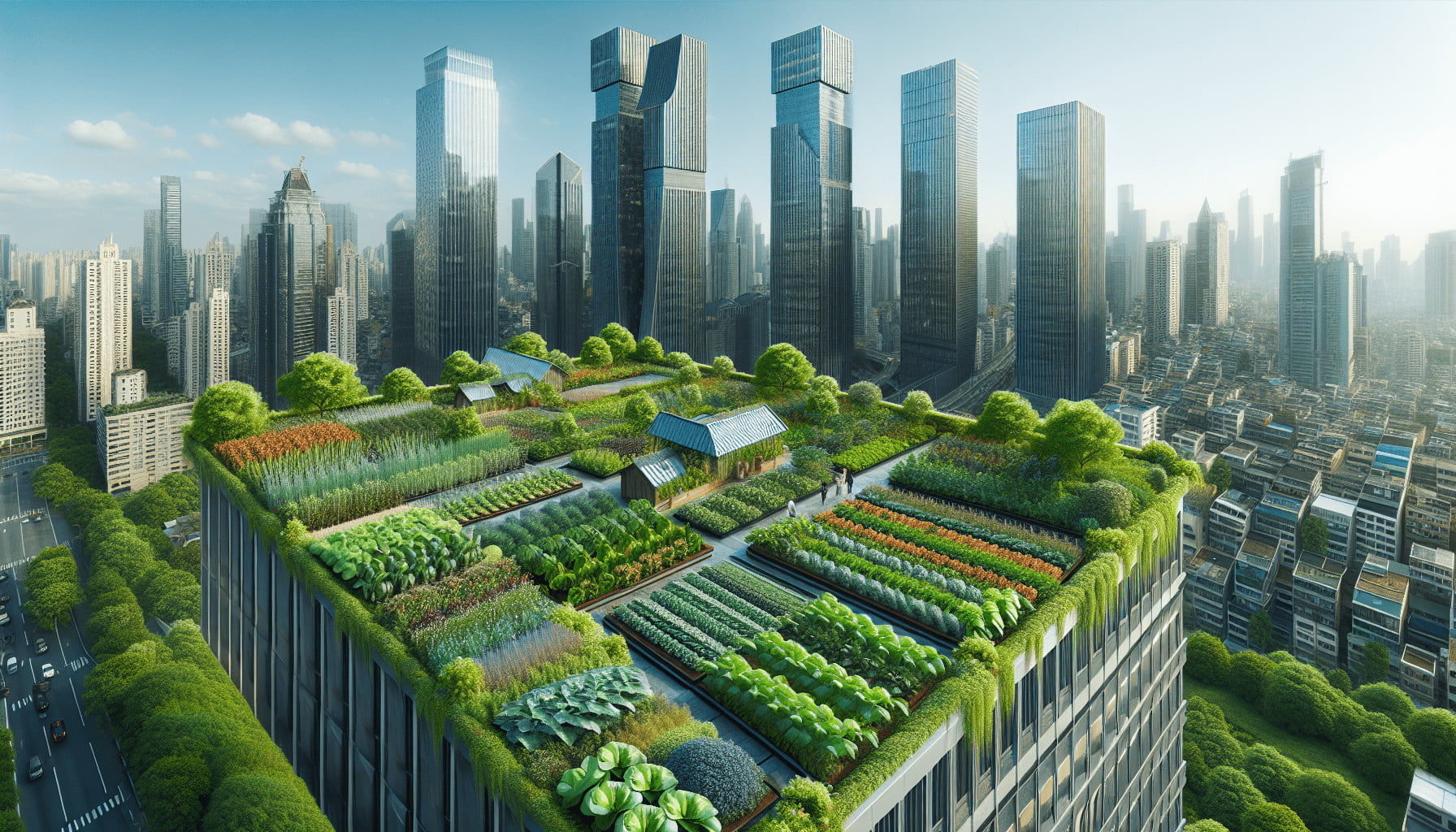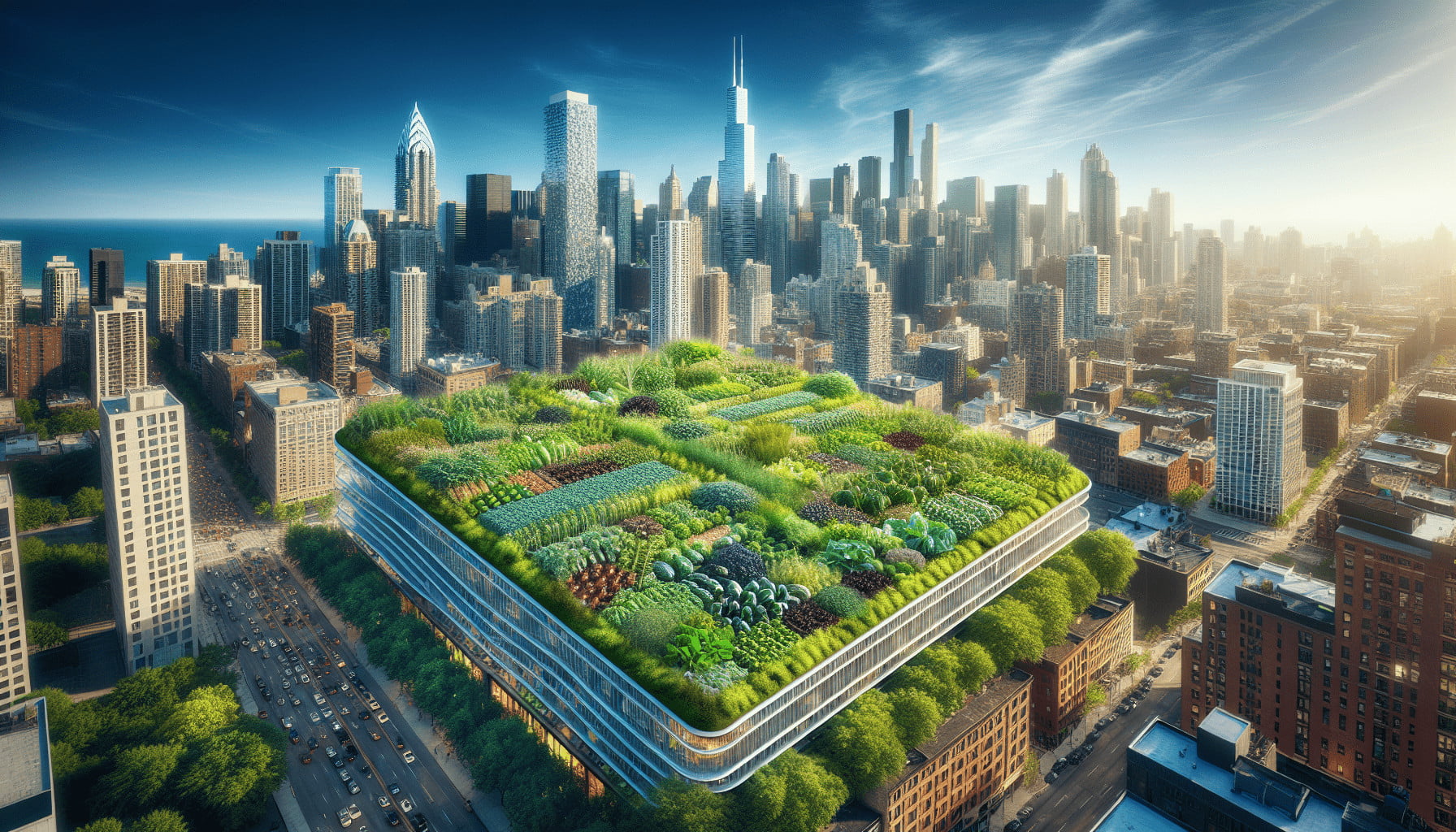Have you ever considered the potential of your building’s roof to contribute to urban food production? Urban environments are packed tightly with structures, leading to limited green spaces. However, green roof systems are emerging as an innovative solution to this challenge, transforming underutilized rooftop spaces into productive, eco-friendly havens. Let’s embark on this journey to discover how green roof systems can serve as a viable option for urban food production, enhancing both the environment and your lifestyle.

What is a Green Roof System?
A green roof, also known as a living roof, is a rooftop covered with vegetation. It consists of various layers, including a waterproof membrane, root barrier, drainage system, and growing medium, all of which support plant life. Green roof systems can range from simple setups with grass and moss to complex installations featuring shrubs, trees, and even vegetable gardens.
Types of Green Roofs
There are primarily two types of green roofs: extensive and intensive. Each type has distinct features and requirements, detailed in the table below:
| Type | Description | Vegetation | Maintenance Requirement |
|---|---|---|---|
| Extensive | Lightweight, shallow growing medium (2-6 inches) | Moss, Sedum, Grass | Low: Annual Weeding, Minimal Watering |
| Intensive | Deeper growing medium (>6 inches), heavier burden on structure | Shrubs, Trees, Vegetables | High: Regular Watering, Fertilization, Pruning |
Benefits of Green Roof Systems
Green roofs provide multiple benefits that extend beyond aesthetics. They aid in temperature regulation, reducing the urban heat island effect, and thereby lowering energy consumption. Furthermore, they improve air quality, manage stormwater runoff, and provide additional habitat for local wildlife. Critically, green roofs can also produce fresh, local food, significantly reducing the carbon footprint associated with transporting produce.
Implementing Green Roof Systems for Urban Food Production
Choosing the Right Plants
When selecting plants for a green roof intended for food production, consider the local climate, the depth of the substrate, and the available sunlight. Hardy, drought-resistant plants that can thrive in shallow soils and harsh conditions are ideal. Common choices include:
- Herbs (e.g., rosemary, thyme, chives)
- Leafy greens (e.g., spinach, kale, lettuce)
- Root vegetables (e.g., radishes, carrots)
- Fruit-bearing plants (e.g., strawberries, tomatoes)
Installation Process
Installing a green roof system involves several steps:
- Assessment and Planning: Evaluate the building’s structural integrity to support additional weight and plan the layout, types of plants, and irrigation system.
- Waterproofing and Root Barrier Layer: Prevent water damage and root penetration to protect the roof.
- Drainage Layer: Ensure proper water flow and prevent waterlogging.
- Filter Fabric: Retain soil and growing medium while allowing water to drain.
- Growing Medium: Use a lightweight, permeable soil mix suitable for the chosen plants.
- Planting: Carefully plant seedlings or seeds as per the designed layout.
- Maintenance: Establish a maintenance routine to ensure plant health and productivity.
Irrigation and Water Management
Efficient irrigation is crucial for a successful green roof. Drip irrigation systems are commonly used due to their efficiency in water usage. It’s essential to balance watering needs with sustainable practices, such as rainwater harvesting and using drought-tolerant plant varieties.
Success Stories and Case Studies
Brooklyn Grange, New York
Brooklyn Grange operates the world’s largest rooftop soil farms, producing over 50,000 pounds of organically-grown vegetables annually. The project has transformed barren rooftops into thriving urban farms, providing fresh produce to local communities while serving as an educational platform.
The Roof Gardens, London
High above the bustling streets of London, The Roof Gardens span 1.5 acres and include themed gardens, water features, and even flamingos. This iconic site showcases how green roofs can offer both aesthetic beauty and functional benefits, contributing to biodiversity and offering space for relaxation.
Challenges and Considerations
While green roofs offer numerous advantages, they also present challenges. Key considerations include:
Structural Weight
Green roofs add significant weight to a building, necessitating a thorough structural assessment to ensure the roof can support the added burden. Intensive green roofs, in particular, can be quite heavy.
Initial Costs
The installation of green roofs can be expensive due to the materials and labor involved. However, the long-term benefits, including energy savings and food production, can outweigh initial costs.
Maintenance and Expertise
Green roofs require regular maintenance, including watering, weeding, and occasional fertilization. Urban dwellers might need to learn new skills or hire experts to maintain a productive green roof garden effectively.

Environmental and Economic Impact
Reducing Urban Heat Islands
Green roofs help in mitigating the urban heat island effect by providing a cooling effect through evapotranspiration. This not only makes cities more comfortable during hot weather but also reduces energy consumption in cooling systems.
Enhancing Air Quality
Plants on green roofs filter particulates and pollutants from the air, contributing to improved air quality in urban environments. This can lead to healthier living conditions and reduce healthcare costs associated with respiratory issues.
Sustainable Food Production
Urban food production on green roofs reduces the need for long-distance transportation of produce, cutting down on greenhouse gas emissions. Additionally, it allows for the cultivation of fresh, organic food right where it’s needed most, promoting food security and reducing waste.
Community and Social Benefits
Urban Green Spaces
Green roofs provide much-needed green spaces in densely populated urban areas, offering residents a place to unwind and reconnect with nature. These spaces can serve as community gathering spots, fostering social cohesion and a sense of community.
Educational Opportunities
Green roofs present unique educational opportunities, teaching urban dwellers about sustainable practices, horticulture, and the importance of local food systems. Schools and community organizations can use green roofs for hands-on learning experiences.
Mental Health Benefits
Access to green spaces has been proven to reduce stress and improve mental health. Green roofs offer urban residents a chance to escape the concrete jungle and enjoy a piece of nature, even in the heart of the city.
Policy and Support
Government Incentives
Many local governments provide incentives for green roof installations, such as tax breaks, grants, or expedited permitting processes. These incentives aim to encourage sustainable building practices and enhance urban resilience.
Building Codes and Regulations
To ensure safety and effectiveness, green roof installations must comply with local building codes and regulations. These rules often cover structural integrity, water management, and fire safety standards.
Community Initiatives
Neighborhood groups and local organizations can play a crucial role in promoting green roof systems. By advocating for green roofs and organizing collective projects, communities can make significant strides toward a greener, more sustainable urban environment.
Future Trends in Green Roof Systems
Technological Advancements
Advances in technology are making green roof systems more efficient and accessible. For example, smart irrigation systems can optimize water usage, while new lightweight materials make it easier to install green roofs on a wider variety of buildings.
Biodiversity Enhancement
As awareness of the importance of biodiversity grows, green roofs are being designed to support a wider range of plant and animal species. These ‘biodiversity roofs’ aim to create mini-ecosystems in urban environments, contributing to conservation efforts.
Integration with Renewable Energy
Some green roofs are being integrated with renewable energy systems, such as solar panels. This dual-purpose approach maximizes the use of rooftop space, combining energy production with the benefits of green roofing.
Steps to Get Started with Your Green Roof
- Research: Educate yourself about green roofs’ benefits, types, and requirements. Understanding local regulations and available incentives can be beneficial.
- Consult Professionals: Engage with architects, engineers, and green roof specialists to assess feasibility and design a system that meets your needs.
- Plan and Design: Create a detailed plan outlining the layout, plant types, irrigation system, and maintenance schedule.
- Source Materials: Choose high-quality, sustainable materials for your green roof’s layers and growing medium.
- Installation: Follow best practices during installation to ensure the longevity and effectiveness of your green roof.
- Maintenance: Develop and adhere to a maintenance schedule to keep your green roof healthy and productive.
Conclusion
Green roof systems present a fantastic opportunity to utilize urban spaces more effectively, turning overlooked rooftops into areas for food production, ecological enhancement, and communal enjoyment. By adopting green roofs, you contribute to environmental sustainability, improve urban living conditions, and promote local food production. Start planning today and transform your rooftop into a green oasis, benefiting both you and the broader urban ecosystem.
